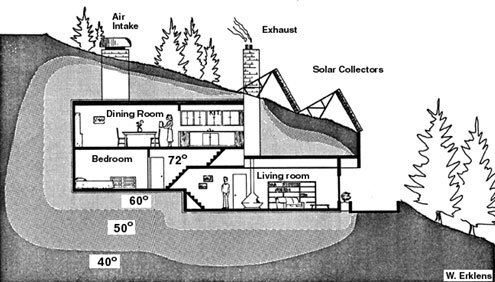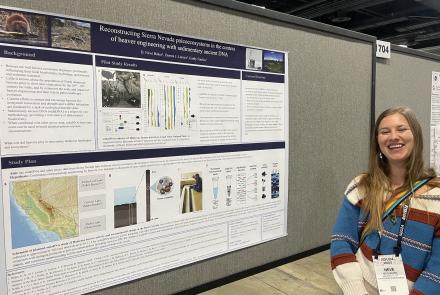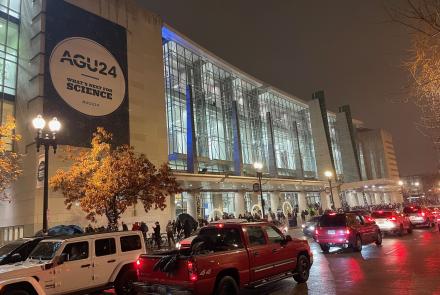
An Underground House
If you have a building site on a south-facing slope and are interested in lower heating costs in future years, the underground house is worth considering. Whether or not one uses solar collectors or some other exotic form of heat, the house surrounded with dirt on all sides except one offers real advantage when it comes to outside wall temperature. Instead of fifty below just beyond the insulation, the earth covered house offers temperatures well above the mean annual temperature (plus twenties or thirties Fahrenheit in Alaska).
Unlike its Eskimo and Athapascan sod-covered forerunners, the underground house need not be dark. Large multi-pane windows placed on the south wall and properly shuttered on cold, dark nights can provide both light and heat when the sun is up, yet without excessive heat loss during evening and nighttime hours.
The accompanying drawing exhibiting one possible layout of an effective underground house was shown recently by the University of Alaska's John Zarling and Richard Seifert. They are researching the requirements of using solar energy for heating domestic water and housing in Alaska. Their study involves calculations for the communities of Annette, Palmer, Bethel, Fairbanks and Barrow. Their early results show that solar heating is practical for heating of domestic water at some locations, especially those where the cost of imported fuel is high.






